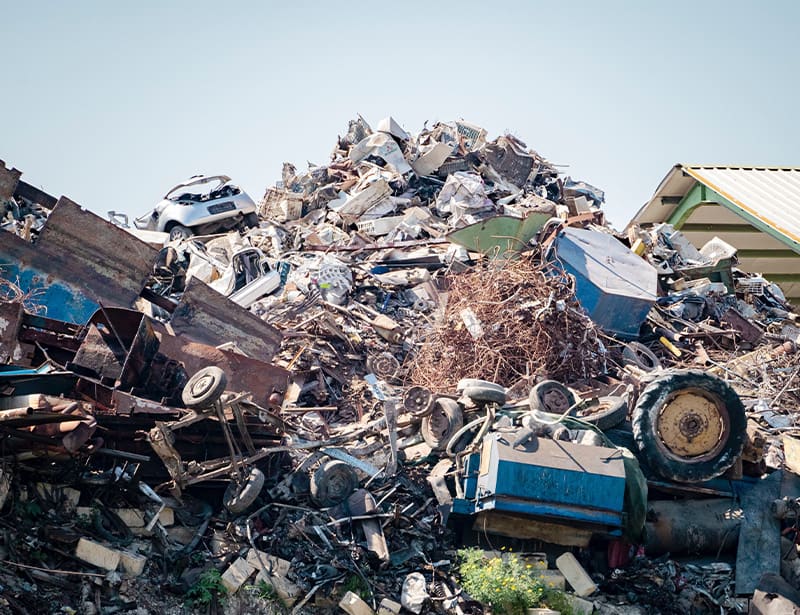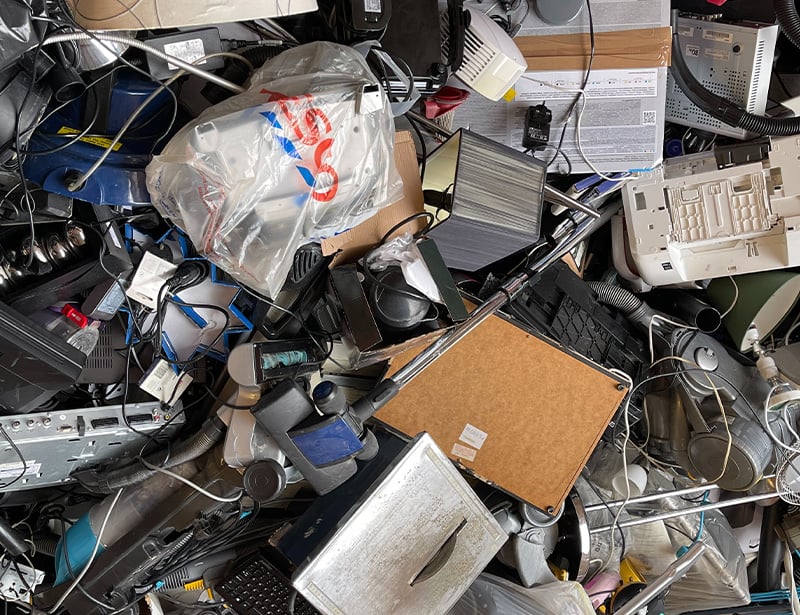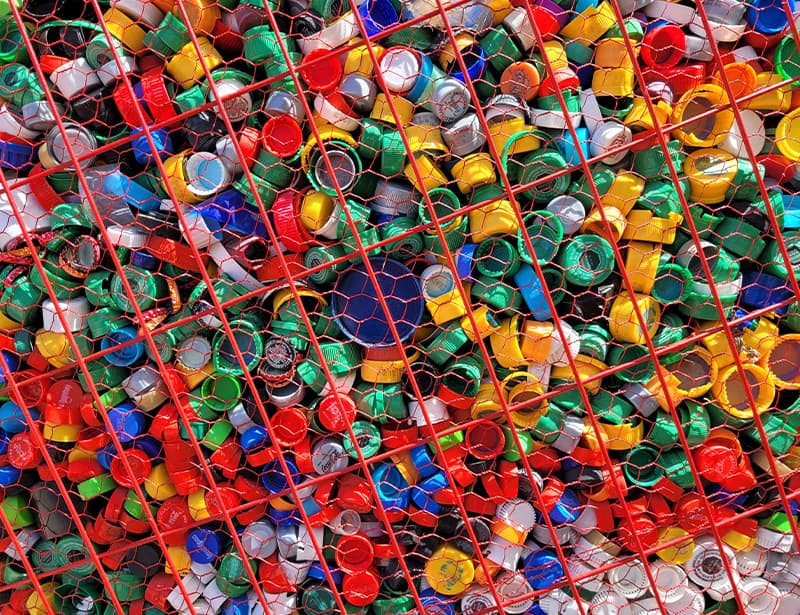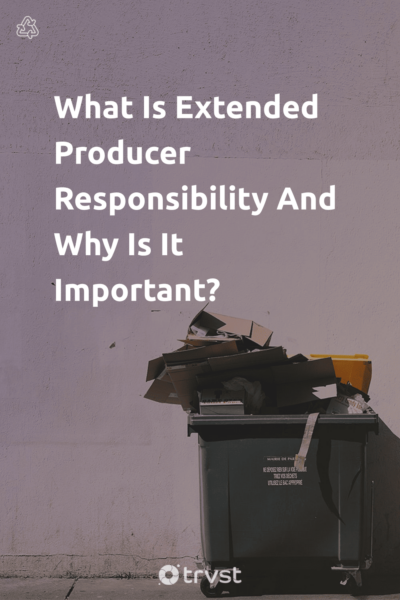What Is Extended Producer Responsibility And Why Is It Important?
Extended producer responsibility is a practice and policy approach. Here, the manufacturers assume responsibility for the last stage of their products. They accept the finished product used by a consumer and recycle it. The motivational factors for extended producers' responsibility practices can be from an economic to an environmental standpoint.
This article explains the concept of extended producer responsibility. We’ll also explore the importance of extended producer responsibility and its challenges.
Related Read: Importance of 4Rs - Refuse, Reduce, Reuse, Recycle.
What is extended producer responsibility?

The Organisation for Economic Co-operation and Development (OECD) defines extended producer responsibility as an environmental policy approach that extends the producer’s responsibility to the post-consumer stage of a product's lifecycle.
Extended producer responsibility (EPR) makes the producers responsible for all the stages of their life cycle, taking it away from the consumers and government. Several OECD nations saw the emergence of EPR for the end-of-life management of items in the late 1980s.
It was a response to the difficulties that many local governments were having managing trash that was increasing in volume and complexity, as well as to the fact that the public frequently opposed the location of waste management facilities. It was also an attempt to redefine the producer's responsibilities and the incentives offered to them to encourage a product design that increases the recycling rates.
So, the OECD released a guidance manual on extended producer responsibility in 2001. The manual was to help member countries implement EPR policies4.
Extended producer responsibility policies are a way for the government to improve the environmental impacts of manufacturing items. According to a survey, over 400 EPR programs are in operation. Also, the United States implemented over 70 EPR laws between 1991 and 20113.
The importance of extended producer responsibility in packaging waste

Extended producer responsibility is crucial because it helps improve recycling. It encourages brand owners to design more recyclable products. The EPR influences producer's product designs to use less toxic raw materials and reduce packaging use.
It often leads to the generation of separated, high-quality waste materials, such as end-of-life vehicles and waste electrical equipment, that can be more readily processed into raw materials1.
By doing this, we can reduce the production of greenhouse gases, which are harmful to the environment. Since the EPR allows the end-of-life costs of products for producers, it increases the sustainability of its supply chain. This reduces production costs and has no toxic environmental impact.
EPR programs provide financial incentives that also assist producers with their recycling program. It improves their recycling technology and recycling infrastructure.
Australia is an example of how extended producer responsibility increases recycling rates. The country recycled 44,989 tons of televisions and computers during the first year of implementing the National Television and Computer Recycling Scheme2.
Also, it reduces the physical and financial burden of managing waste on the local government. Most times, governments do not have enough resources to aid the proper treatment of waste.
Sometimes, the government is incapable of enforcing proper waste and recycling programs. Extended producer responsibility ensures the proper management of waste.
An EPR legislation also promotes the growth of a circular economy. A primary strategy of the circular economy is to reuse and recycle products to prevent waste in landfills. Extended producer responsibility promotes recycling and, by extension, promotes a circular economy.
Products are in a closed loop instead of the open loop linear economy offers. It forces manufacturers to be more accountable for their production materials and how they affect the environment.
Related Read: Eco-Friendly Packaging.
Extended Producer Responsibility Policy Instruments

Products take-back requirements
Product take-back requirements are policies that require producers to take back a product or its packaging from the consumer after use5. The 1991 German Packaging Ordinance introduced the concept of product take-back requirements.
Take-back is a clear and major way to extend producers' responsibility into the end life of a product. Product take-back policies are for specific products, product categories, and waste streams.
These could be automobiles, electrical and electronic equipment, or packaging waste. This policy instrument is better suited for a reuse or recycling program.
Many countries like Japan, Korea, Australia, Canada, the United States, and the European Union members use it for a wide range of products. They apply take-back policies to electronic products, tires, cars, used oil, oil filters, containers, white goods, and batteries.
Economic and market-based instruments
EPR also uses economic instruments to assign producers extended producer responsibility. These instruments provide financial incentives for the producers to aid the implementation of EPR6.
However, we need to establish some conditions to ensure the allocation of some physical and financial responsibility.
For example, a producer has the physical responsibility when consumers pay an advance disposal fee to cover the end-of-life costs of products. The economic instruments for EPR are:
- Deposit/refund schemes
- Advance disposal fees
- Material taxes
- Upstream combination tax
Deposit/refund schemes
The deposit/scheme is a system where a consumer makes a deposit when they buy an item, and the deposit is wholly or partially refunded when the consumer returns the product after use. Consumers mostly return the used products to the company or a specific treatment facility.
The deposit includes the commercial costs of the packaging or the specific product and the environmental costs of disposal and littering. However, the refunded amount includes the avoided environmental costs and the scrap value of the container.
Initially, the deposit/refund scheme focused on beverage containers. It was an effective way of improving the recycling rates of beverage packaging. However, more countries are trying to implement it for other products like shopping bags, fluorescent light bulbs, and batteries. Manufacturers often plan with retailers, distributors, or recycling centers.
Distributors pick up the used item and send it to a treatment or recycling facility. The manufacturers often plan with retailers to accept the same brand and type of products to make recycling easier.
The scheme increases a product's reuse value, and it reduces the amount of raw materials used for production. This works well for plastic packaging. It helps reduce plastic waste streams in the environment.
Advance disposal fees
In extended producer responsibility, an advance disposal fee is a fee on certain products or product categories. The fee is based on the estimated costs of collection of the end product and the treatment methods. It is a fee for recycling infrastructures. Who collects the imposed fee?
The company can impose the fee through the government or through industry-based private sector organizations. The company has to determine the role of the collector, retailer, and distributor at the program's design stage.
Some OECD member states that use the advance disposal fee set up a system to return excess fees to consumers. The excess fee comes up when there is a reduction in recycling costs. The government returns the unused portion of the fees paid to the consumers. This EPR instrument works best with products with a long lifespan, like refrigerators and tires.
However, you can't consider the advance disposal fees as an EPR policy if the producers have no responsibility. Since the consumers have financial responsibility, they should allocate some physical responsibilities to the producers. So producers handle the products' physical organization, treatment, and recycling.
For instance, the producers can set up a collection system with retailers. Better still, they can set up their own return centers. Consumers can easily mail the used products to them.
Material taxes
The government imposes material taxes to reduce the use of raw materials, especially toxic materials, with low recycling rates. Material taxes promote the use of less toxic and recycled materials in manufacturing. Also, the government could impose special taxes on specific materials that cause environmental pollution.
They should set the tax at a level where the marginal costs of the tax equal the marginal treatment costs. They could set the tax based on production damages and waste management costs to make it easier. Essentially, the tax should consider the costs of product recovery, reuse, and recycling.
They should set the tax aside specifically and use it to collect, sort, and treat post-consumer products.
Upstream combination tax
The 1998 Washington, D.C. EPR Workshop introduced upstream combination tax as an alternative economic instrument to implement extended producer responsibility. It is a tax paid by producers and used to subsidize waste treatment.
The tax system focuses on reducing the amount of materials in waste streams. So, they charge the levy by weight and not per product unit. Then, waste management facilities get subsidies. Local governments can also get subsidies for treating and recycling waste.
Information-based instruments
Extended producer responsibility information-based instruments support the activities of the producer responsibility organization by raising public awareness7. They impose information requirements on manufacturers. These requirements are;
- reporting requirements,
- labeling of products and components,
- communicating to consumers about producer responsibility and waste separation,
- and informing recyclers about the materials used in products.
The Challenges of EPR Program Implementation

There are some major challenges that policy implementers will face in their endeavors to set up extended producer responsibility programs. They will face governance and administrative challenges, economic challenges, and some start-up problems.
Governance and Administrative Challenges
The administrative aspect of EPR programs refers to the overall system setup and the allocation of responsibility among the actors (product producers, PROs, importers, collectors, recyclers, municipalities, and consumers) involved. A challenge in this area would be allocating unclear and overlapping roles and responsibilities to the actors.
Another challenge of implementing EPR schemes is the lack of transparency and difficulty comparing data. Some PROs provide little information to the public regarding their economic data and the costs manufacturers and recyclers face. It is difficult to determine the right level of information PROs, and manufacturers provide because it is challenging to implement transparency in some sectors.
The lack of enforcement mechanisms also contributes to the governance challenges faced by product stewardship organizations and policymakers. Some of the problems that disrupt the adequate functioning of extended producer responsibility need constant monitoring and control by the public authorities.
However, policymakers cannot achieve full compliance because they don't have adequate enforcement tools and sanctions8.
Economic Challenges
An economic challenge faced by EPR is the difficulty in implementing differentiated fees and the lack of incentives. The concept of EPR is the payment of post-consumer costs with an incentive to minimize costs through better product designs. It is difficult for PROs to set a specific fee/producer that matches the quantity of material on the market and their actual recycling costs.
Also, different understandings of the total cost recovery pose a problem to EPR. As part of their financial responsibilities, manufacturers often bear the total costs of managing post-consumer products to improve costs and environmental issues.
However, there is no concurrence on what aspects the costs will cover. There isn't an agreement on the efficiency of cost allocation between manufacturers and municipalities. Since they depend on various factors, i.e., technology and infrastructure, the net expenses are challenging to evaluate9.
Specific EPR Startup Problems
Apart from the general challenges discussed above, some problems arise while developing a new EPR scheme. One of these problems is waste leakage. It occurs when some waste is not within the jurisdiction of the EPR scheme. Here, the collectors and recyclers use other legal and illegal means for waste treatment.
Waste leakage could also occur in countries that export waste. These waste leakages often lead to environmental and health problems. Another startup problem in a new EPR scheme is the presence of products from manufacturers that didn't contribute to the scheme. It leads to low levels of financial capabilities to handle post-consumer costs10.
Conclusion
We battle significant environmental problems from our high consumption rates. Our high demand and consumption rates for products produce massive waste in landfills because we have low recycling rates. EPR programs are a way to distribute the duty of recycling used products to manufacturers.
By doing this, they learn to adjust and use more sustainable materials that reduce the costs of production and recycling. As a brand owner, join an EPR scheme to protect the environment for your waste products. Consumers should also follow the return instructions for a particular product so manufacturers can fulfill their responsibilities. We all have a part in keeping the environment safe.
Jen’s a passionate environmentalist and sustainability expert. With a science degree from Babcock University Jen loves applying her research skills to craft editorial that connects with our global changemaker and readership audiences centered around topics including zero waste, sustainability, climate change, and biodiversity.
Elsewhere Jen’s interests include the role that future technology and data have in helping us solve some of the planet’s biggest challenges.

